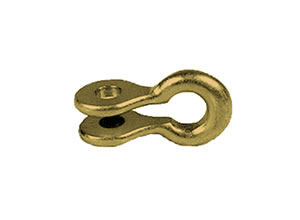
When using cables to lift or tow objects, you may want to invest in a shackle. Connecting a cable directly to an object can result in damage. Due to friction, either the cable or the object itself may sustain damage. A cable shackle, however, will allow you to safely lift or tow the object while minimizing the risk of damage.
What Is a Cable Shackle?
A cable shackle is a piece of hardware that’s designed to support a cable during rigging operations. As shown in the photo above, they feature a simple design. A typical cable shackle consists of a U-shaped fastener. At the base of the cable shackle is a hole. Regardless of the design, all cable shackles are used in conjunction with a wire rope or cable during rigging operations.
Cable shackles are commonly used in the following industries:
- Automotive
- Aerospace
- Maritime
- Oil and gas
- Construction
- Manufacturing
How Cable Shackles Work
Cable shackles work by supporting the tension of an object. When lifting or towing an object with a cable, tension will occur. Too much tension, of course, can result in damage to the cable or the object itself. With a cable shackle, you can safely perform rigging operations such as lifting and towing.
A cable shackle essentially offers an anchor point for a wire rope or cable. Most of them work in conjunction with a removable pin, such as a split pin or cotter pin. You can place a pin through the hole at the base of the cable shackle. Once the pin is in place, you can secure a wire rope or cable to the shackle.
Choosing a Cable Shackle: What You Should Know
If you’re planning to buy a cable shackle, there are several things you should consider. For starters, cable shackles are available in different materials. Carbon steel and stainless steel are popular materials in which cable shackles are made. Carbon steel is slightly stronger, whereas stainless steel offers a superior level of protection against corrosion.
You should consider the eyelet type when choosing a cable shackle. The eyelet is the opening. All cable shackles have an eyelet, but the shape and design of the eyelet may vary.
Not all cable shackles are the same size. Some of them are longer or wider than others. Bigger cable shackles are typically stronger and, thus, support heavier loads than smaller cable shackles.



